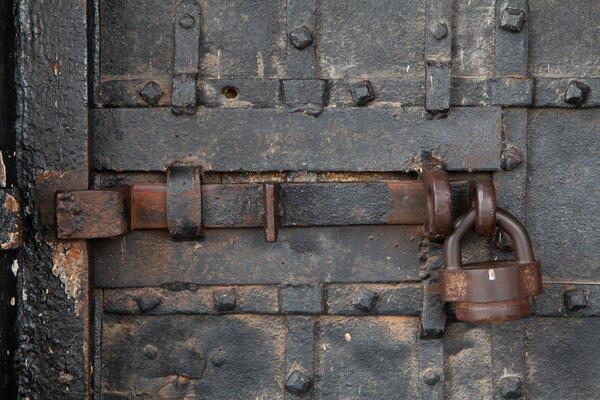Part of the cast iron obtained in the blast furnace of the Nevyansk plant was used for smelting into bloomery iron. At the Nevyansk plant, metal was smelted on charcoal from local ores that contained almost no harmful impurities. It was so “kind” and “soft” that it was compared to sable fur.
A single-wing door made of cast iron hides a “secret” passage in the northern wall of the quadrangle. The hollow wall is 1 meter 78 centimeters thick with a stone staircase lined with cast iron slabs inside. The staircase leads to the third floor of the tower, to the former factory laboratory, or “assay room”. By decree of 1720, all factories were required to conduct laboratory tests of the ore they mined. Akinfiy Demidov was practically forced to start his own factory laboratory. He decided to place it within the walls of the tower.
In the 1720s, Ural strip and “baut” iron (rod, square and round sections of various sizes) were highly valued in Europe. The “Old Sable” iron was widely used in the construction of the Nevyansk Tower. During the restoration of the roof of its porch, the stamp “Siberia N: S DAD” was found on one of the metal parts and below there was an image of a sable with a drooping tail, running to the right. This part was manufactured at the Nevyansk plant after 1731. Metal is often “baptized” with a mark, like a person with a name. The Nevyansk plant became famous for its metal with the “Siberia” mark. In November 1750, an order was sent from the main Nevyansk factory office to the factory offices of Nizhny Tagil, Vyyskaya, Layskaya, Chernoistochinskaya, Visimo-Shaitanskaya, Verkhnetagilskaya, Utkinskaya, Shaitanskaya, Revdinskaya and Byngovskaya, indicating that the stamper at the Nevyansk plant Fyodor Timofeyev must make the stamps with the name of the factories, annual and “Siberia” for a fee “without extravagance” and “produce a notch for all the above-mentioned factories”, “and at other factories so that no one else can produce them… besides him.”
The Nevyansk plant mainly produced semi-finished products, that is, cast iron and iron of various grades, sent to the central governorates, Moscow, and St. Petersburg for further processing into various products. A relatively small amount of metal was used to produce ready-made, finished products for households, such as utensils, dishes, production tools sent for sale, and, finally, the plant’s own tools and work equipment.




